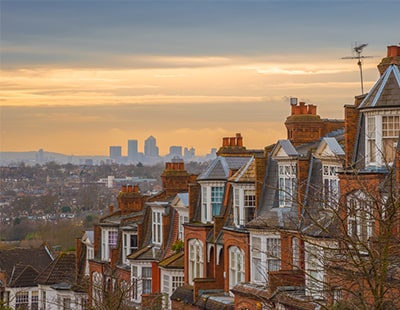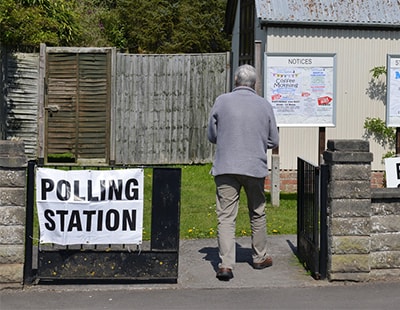In fact, if Khan is successful in his bid it wouldn’t be the first time that rent controls have been imposed in the United Kingdom.
A shortage of housing during WWI saw the introduction of rent controls in the UK and subsequent legislation retained rent controls in some form or the other until deregulation under Thatcher.
More recently, Scotland and Northern Ireland have been using their devolved powers to introduce rent caps in some areas and types of tenancies.
Making life more affordable for Generation Rent
London’s private rented sector has been growing rapidly in recent years and now accounts for 30% of all London households. Some predict that by 2030 that number will climb to 40%.
But rent prices have also risen far quicker than wages and for the typical Londoner the majority of their income goes on rent.
In the areas of East London we work in, we’ve seen the average 2-bed skyrocket to over £1700 a month in rent. To buy a 2-bed will also easily set you back around £500,000 - with the deposit amounting to the cost of a whole property elsewhere in the UK.
The likelihood is that many Londoners - especially the young and lower income earners - will rent for way into their 40s and beyond. This is a totally new phenomenon, so it makes sense to adapt and to take steps to protect tenants’ rights.
Ideally, some form of rent control would make London more affordable for those who live and work in the city and give tenants greater security.
But will it actually work in practice?
The cultural component of housing in the UK and London
If rent controls already work in other cities and countries they could work in London too, right?
Unfortunately, it’s more nuanced than that. Drawing simple parallels between countries ignores the fundamental and historical differences between national property markets.
Take Berlin, for example. Arguably, rent control works quite well in Berlin. However, that’s largely down to one key cultural difference: Germans don’t rent in order to buy down the line, they choose to rent as a way of life. As a result, Germany’s homeownership rates are among the lowest in the developed world.
This in turn means that the property market is far more stable than in the UK, where homeownership is considered a long-term goal for many.
It also means that tenants make up a large proportion of the electorate and so there’s a greater level of pressure on the government to impose strong tenancy protection laws throughout the whole housing system. For instance, it’s common to find fixed tenancies for five or 10 years in Germany.
So applying rent caps in London won’t be enough to solve the city’s housing issues. If the Mayor wants the Berlin-model, rent controls would need to be rolled out alongside improved tenant rights across the board.
Existing and would-be landlords will be put off the sector
The National Landlord Association has been understandably critical of the Mayor’s proposals. It points out that capping how much landlords are able to let their properties for will reduce rental yields and potentially drive many ‘good’ landlords out of the sector.
We’ve seen this play out for our landlords over the last two decades. In the early to mid-2000s, a third of our sales in East London were for buy-to-let properties; now that number sits closer to 10%. Back then, landlords could expect a rental yield of 10%, whereas now they can expect 3-4% on average.
The impact of rent control is basic supply-and-demand economics.
As investing in buy-to-let becomes less lucrative, more and more landlords will leave the private rented sector and move their money into other income-generating projects, like stocks and shares. With fewer landlords in the sector, the supply of rented properties will dwindle.
Middle income earners who are currently renting may well be able to leave the private rented sector too, since more rental properties flood the housing market and drive prices down. But even so, the demand for private rental properties will still outstrip supply.
What’s more, with social housing in short supply, the risk of homelessness among low income earners may rise. This means that the very government intervention intended to give greater housing security might have the exact opposite effect.
Lack of affordable housing stock
The crux of the housing issue in London is not that there’s a lack of stock - there are a million properties being advertised on Rightmove right now. The issue is that there is a shortage of affordable housing stock.
Artificially suppressing rents in the private rented sector won’t fix the root of the problem - it may even exacerbate it.
London needs more investment in affordable social housing, alongside stronger protection for tenants in the private rented sector and incentives to keep ‘good’ landlords in business.
Regardless of any individual’s political leanings, as an industry we’d love to see a housing policy work in the long term for the many, not the few.
The Mayor of London’s well-intended proposals, however, may have far-reaching and unintended consequences.
*Lars Gooch is Residential Development Director at Keatons























Join the conversation
Jump to latest comment and add your reply
Every little helps - will the cap help? Possibly. However, the whole 'affordable homes' structure has been a fail from what I'm told, these new apartments being built cost an arm & a leg.
Go back to the basic principle - supply & demand.
Rent caps will result in vast numbers of LL leaving the sector.
Rent caps would degrade capital values.
If I was a London LL I would be selling everything I had in London.
PRA regulations with rent caps in force would destroy value of London rental properties.
They would need to be sold to the homeowner market pronto!!
With such rent controls the size of deposits would be huge.
It would be unecononic for most LL to buy London property.
Far better to invest where there are no rent controls.
Rents would massively increase in London as vast swathes of rental properties are sold
That is black market rents would occur!
A LL could sell one £500000 London property and buy 2 on the coast and increase rents when desired.
London is a busted flush if idiot Khan gets his way.
He is the Labour Govt already in place and attempting to introduce looney Labour policies.
This will be just the start cos if looney Corbyn gets in there will be blood in the streets.
LL need to protect themselves or they stand to lose all they have worked for over the past 18 years since BTL mortgages became available.
In the current political situation you would not wish to bet against a Labour Govt attaining power.
A truly terrifying threat to all LL!!!!!
Please login to comment